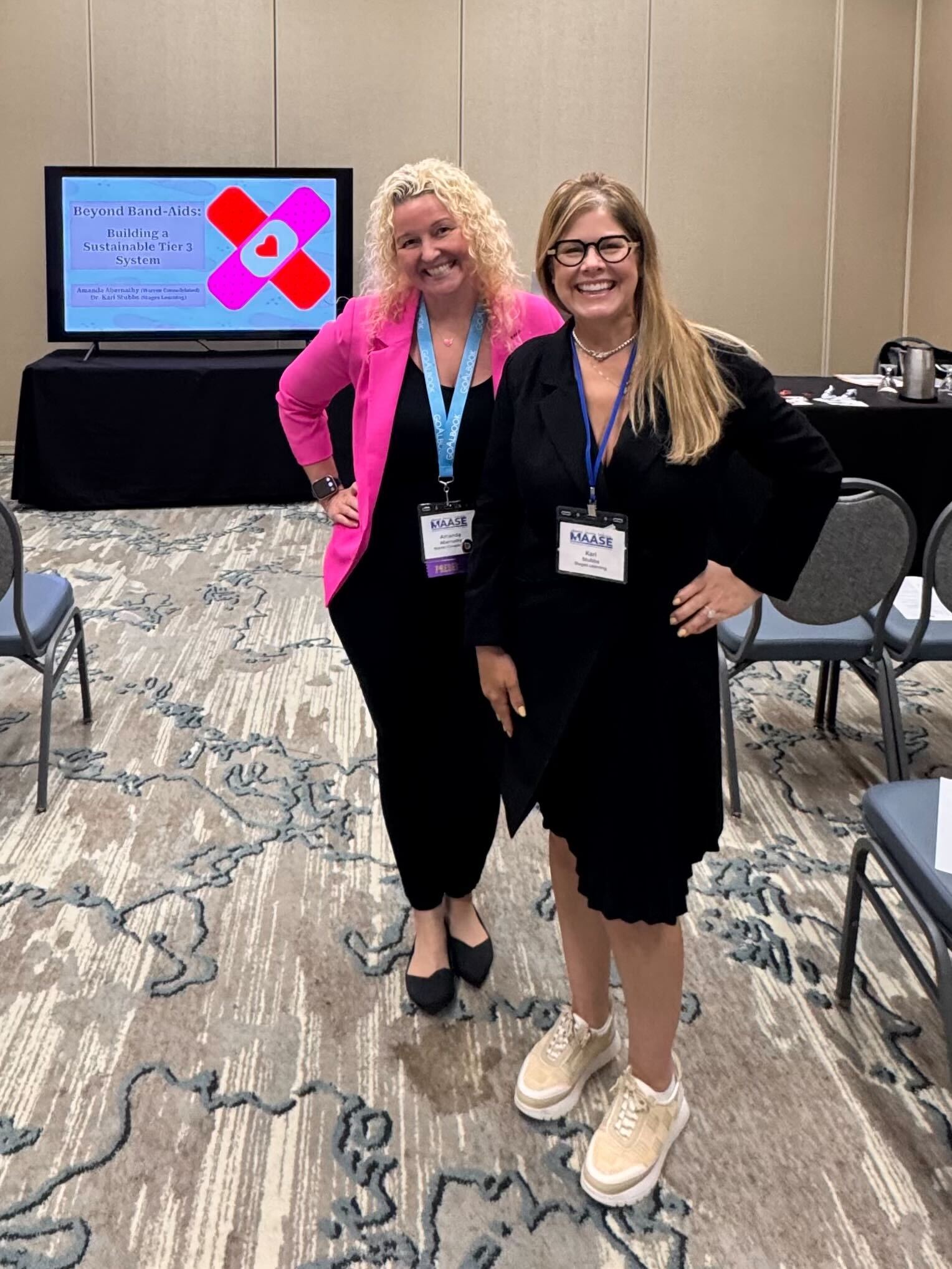A New Education: Teaching Coding to Students with Autism
Although many students with autism possess incredible talents and abilities, especially related to spatial reasoning, only about 10 to 20 percent of adults with autism are employed (Born, 2011; Kavilanz, 2016). Providing code education to students with autism is not only critical for providing these students with a fulfilling and enjoyable educational experience, but also for their success as adults.
Coding skills are in high demand
In today's ever-changing technology-reliant world, coding is becoming prevalent. More jobs are emerging that rely on computer science skills and more schools are working to integrate computer science into their curricula. According to the U.S. Bureau of Labor and Statistics, there will be more than 1.3 million job openings that require computer science skills by the year 2022 (Google 2015).
 To meet the growing demand for individuals with computer science skills, many organizations and schools are implementing computer science education initiatives (NYC Mayor’s Office 2015; McIntyre 2016). While the call for making programming education mainstream is loud, the need is even more pronounced for children with autism. This article will explore why programming education for students with autism is critical and provide strategies to create successful code education programs for this population.
To meet the growing demand for individuals with computer science skills, many organizations and schools are implementing computer science education initiatives (NYC Mayor’s Office 2015; McIntyre 2016). While the call for making programming education mainstream is loud, the need is even more pronounced for children with autism. This article will explore why programming education for students with autism is critical and provide strategies to create successful code education programs for this population.
Programming requires a deep understanding of mathematics and logic (Duran, 2015), especially when its purpose is to produce aesthetic and well-designed outputs. Visual programming outputs are tangible exemplars of the interrelatedness of the logical and spatial domains, both categories in which many children with autism excel (Berube, 2007; Safran 2002).
Background: Workforce Outlook
The Israeli Defense Force (IDF) is the only army in the world to accept teens with autism (Rubin, 2016). Rubin describes that in the 9900 unit, also known as the “Visual Intelligence Division,” individuals examine high-resolution satellite images for any unusual or suspicious objects or events. The IDF specifically employs individuals with autism for roles within this unit because of their strong perceptual skills and visual and systematic thinking (Rubin 2016; Sales 2015).
Laurent Mottron (2011), a psychiatry professor from the University of Montreal who employs numerous researchers with autism in her lab, describes that students with autism make exceptionally thorough bottom-up researchers because of their intense focus and deep interest in seeking information and creating structure. Similarly, Dr. Temple Grandin, a professor and researcher who has autism, described that she thinks in pictures causing her to perform well on visual/ spatial tasks (as cited in Berube, 2007). Having individuals with autism play such critical roles in defense and in research suggests that their skills can greatly benefit other industries. However, despite having large potential and apparent talent, many students with autism are not accepted into the workforce.
Perhaps the reason that many individuals do not get into the workforce is employers’ prejudice and ignorance. Other reasons may include a poor facility with social skills that are required in most work environments (Kavilanz, 2016; Ribu, 2010) and having the proper technical preparation. To combat this, some organizations are implementing programs to help children and young adults with autism find successful employment in tech fields. For example, LiveCode was a campaign launched by a parent of a child with autism in order to provide 3,000 young adults who have autism with a six-month course in making apps and an introduction to the tech industry (King, 2015).
Another similar initiative was led by an educational non-profit organization called “Have Dreams” in Evanston, Illinois (Born, 2011). They launched a program for kids with “high functioning” autism to learn to code by designing and developing video games. Furthermore, STEM3 Academy in Los Angeles is an entire K-12 school for students with special needs, including a substantial population of students with autism (Kavilanz, 2016). Their focus is on delivering specialized STEM instruction to students, including 3D printing, CAD machines, electronics, robotics and programming. See below for links to these programs.
Benefits of Code Education
The benefits of providing young students with autism with programming education can be summarized into two categories: enjoyment and future success. In her article on teaching computer science to kids with autism, Ribu (2010) describes that students with autism are drawn to computer science because computers are logical and consistent. In contrast to difficult-to-navigate social interactions, programming is an exercise in planning and designing inputs that yield a set of expected outputs. Students with autism prefer this type of problem-solving, where their ability to organize large amounts of data and build reliable structures is useful and yields predictable results (Mottron, 2011; Ribu, 2010). Many students with autism are gifted in mathematics and the sciences (Kavilanz, 2016; Mottron, 2011). Dr. Crasnow, the director of STEM3 Academy reported that 34% of students with special needs who go to college choose STEM majors (as cited in Kavilanz, 2016). Having access to programming education provides these students with another outlet to apply their interests. Programming class is a time in the day when they can enjoy being themselves.
 STEM3 Academy is a great example of how providing students with autism with programming education kickstarts their academic and professional success, as well as improves their overall well-being (Kavilanz, 2016). The program focuses on helping students navigate social interactions while teaching STEM topics (Kavilanz, 2016). Anecdotal data has shown that the school succeeds in helping students with special needs become more competitive with their peers (Kavilanz, 2016).
STEM3 Academy is a great example of how providing students with autism with programming education kickstarts their academic and professional success, as well as improves their overall well-being (Kavilanz, 2016). The program focuses on helping students navigate social interactions while teaching STEM topics (Kavilanz, 2016). Anecdotal data has shown that the school succeeds in helping students with special needs become more competitive with their peers (Kavilanz, 2016).
One parent of a child with autism who attended STEM 3 Academy explained that her child was always great in math, but struggled with social interactions (Kavilanz, 2016). Kavilanz’s article describes that while attending STEM3 Academy, this child’s confidence improved and he became more open to discussing his day and went from underperforming on standardized exams to scoring in the 99th percentile of the PSAT (Kavilanz, 2016). The key is to put students in a setting where they explore topics that they find motivating while providing them with support. For students with autism, that translates into providing them with exercises in logic and spatial reasoning while helping them gain tools to thrive in social situations (Born, 2011). Programming education is a perfect incubator for that. Kavilanz reported that numerous aerospace and defense companies have approached STEM3 Academy in search of talent.
Supportive Teaching and Learning Approaches
1. Provide students with a well-organized classroom structure
- Clearly communicate to students where all the materials are and when they should get them.
- Create a solid structure that includes communicating course routines.
- Maintain consistent seating arrangements.
2. Create routines
- Follow a consistent schedule – for example, an opener, a demo, a group activity, an individual assignment and an exit ticket.
- Create routines and consistent means for handing in assignments, such as using Github.
- Communicate to students your expectations during each activity. For example, at the start of a demo, communicate whether students should be taking notes, following the steps you are taking on their devices, just watching, etc.
- Use straightforward and simple sentences
- Repeat the instructions as needed. Some students may need more reinforcement- be patient!
4. Use development environments and tools for visual asset development.
- Similar to how Dr. Grandin described her experience, many individuals with autism think in visuals (as cited in Berube, 2007). Give students an opportunity to use their advanced visual thinking to create tangible assets, including 2D and 3D drawings, animations, games and data visualizations. See resources section for relevant tools.
- Don’t shy away from group tasks and assignments. Many of the students may struggle socially, so it helps to start by giving small group tasks and increasing them as time progresses.
- Help students establish roles within their groups. Since students with autism respond well to structure (Motron, 2011; Ribu, 2010), having students work in the same groups over extended periods of time may provide favorable circumstances for students to practice negotiating social interactions.
- As time progresses, you can try to change the groups more frequently. This will help students long-term.
- Since many students struggle in social settings (Kavilanz, 2016; Ribu, 2010), model behaviors such as classroom norms, compromising, negotiating roles on team assignments and settling conflicts.
7. Give frequent feedback.
- Students with autism enjoy organizing (Mottron, 2011). Hearing frequent feedback about behaviors and performance can help students generate an internal framework of productive actions and behaviors.
- Provide students with more frequent reinforcement of their actions and task performance.
Modifications
- Aim for a high teacher to student ratio
This is not always possible, but more support is helpful in meeting all student needs.
- Have a designated quiet space
Social stimuli are often overwhelming for students with autism (Ribu, 2010). As Ribu suggests, designate a quiet space where students can work in case they need a break from the more social class setting.
- Teach using a combination of verbal and visual instructions
Students generally benefit from multimodal learning and being exposed to material being reinforced through multiple representations (Mayer, 2014). Since many students with autism think in visual representations, providing more visual examples and instructions will benefit student learning. An example of a resource that includes both written and visual instructions is the Scratch Cards.
- Have a mix of desktop computers, laptops and touchscreen devices
Some students, especially non-verbal (Ribu, 2010) students may benefit from learning through tactile methods. Directly manipulating code, such as in the form of physically collapsing Scratch blocks together brings someone’s visual thoughts to life without an intermediary presented by a keyboard.
Conclusion
Although some work has already been done in providing students with autism with programming education, there is still a long way to go. There are very few programs designed specifically for this population. Not only is there room to design more programs, but educators can work towards transforming general programming classes to meet the needs of all students, including those with special needs and aptitudes. Furthermore, while there is anecdotal data, there is a great need for the formal measurement of the success of such programs in order to be able to scale them effectively.
References
Berube, C. T. (2007, May). Autism and the Artistic Imagination. The Link between Visual Thinking and Intelligence. Teaching Exceptional Children Plus, 3(5). Retrieved from http://files.eric.ed.gov/fulltext/EJ967456.pdf
Born, K. (2011, September 7). Tech Star Kids Teaches Computer Science to Children with Autism. Retrieved from http://www.prweb.com/releases/2011/9/prweb8762065.htm
Computer Science for All: Fundamentals for Our Future. (2015). Retrieved from http://www1.nyc.gov/office-of-the-mayor/education-vision-2015-computer-science.page
Duran, I. (2015). Meta-analysis on the role of mathematics background in the performance of BSCS freshmen in computer programming subjects. International Journal of Scientific and Engineering Research, 6(1), 1576-1578.
Kavilanz, P. (2016, February 9). How this STEM school is shattering stereotypes. CNN Money. Retrieved from http://money.cnn.com/2016/02/09/smallbusiness/stem3-academy-education/
King, H. (2015, April 2). Teaching autistic kids to code. CNN Money. Retrieved from http://money.cnn.com/2015/04/02/technology/autism-livecode-indiegogo/index.html
Mayer, R.E. (Ed.) (2014). Cognitive theory of multimedia learning. In, Cambridge Handbook of Multimedia Learning, pp. 43-71. New York: Cambridge.
McIntyre, E. (2016, January 5). Coding gains traction in Chicago. Retrieved from http://www.educationdive.com/news/coding-gains-traction-in-chicago-schools/411484/
Mottron, L. (2011, November 3). The power of autism. Nature, 479, 33-35. Retrived from http://www.nature.com/articles/479033a.epdf
Ribu, K. (2010). Teaching Computer Science to Students with Asperger’s Syndrome. Proceedings from NIK-2010: The Norwegian Informatics Conference. Bergen, Norway. Retrieved from http://www.nik.no/2010/10-Ribu.pdf
Rubin, S. (2016, January 6). The Israeli Army Unit That Recruits Teens With Autism. The Atlantic. Retrieved from http://www.theatlantic.com/health/archive/2016/01/israeli-army-autism/422850/
Safran, J. (2002). A Practitioner's Guide to Resources on Asperger’s Syndrome. Intervention in School & Clinic, 37 (5), 283-298
Sales, B. (2015, December 13). Soldiers With Autism Take on Key Roles in Israeli Military. The Forward. Retrieved from http://forward.com/news/breaking-news/326511/deciphering-satellite-photos-soldiers-with-autism-take-on-key-roles-in-idf/
Searching for Computer Science: Access and Barriers in U.S. K-12 Education. Google. (2015). Retrieved from https://services.google.com/fh/files/misc/searching-for-computer-science_report.pdf

Irina Uk
Irina Uk is a recent graduate of the Technology, Innovation and Education program at the Harvard Graduate School of Education. She has been a math teacher, instructional designer and researcher. She has a deep interest in inspiring students to express their creativity through STEM topics and develop a love of learning. She currently designs and facilitates customized code education programs. For example, she created the Creative Coding Course at the Harvard Ed Portal and runs the Coding Club through Lesley STEAM lab. Her goal is to make code education broadly accessible. In her free time, Irina enjoys making computational art and practicing martial arts.




